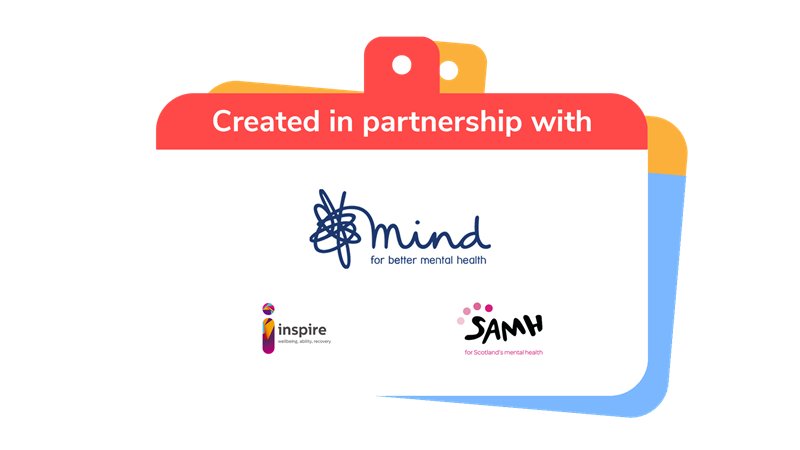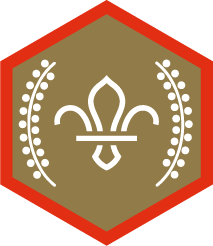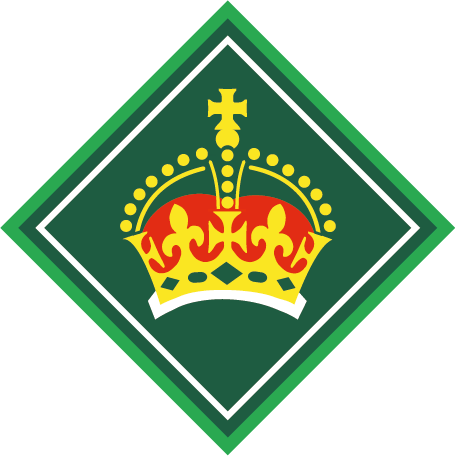
Inside the lines
You’ll need
- Sticky tape
- Sticky tack
- Large sheets of paper
- Large coloured marker pens
Before you begin
- Use the safety checklist to help you plan and risk assess your activity. Additional help to carry out your risk assessment, including examples can be found here. Don’t forget to make sure all young people and adults involved in the activity know how to take part safely.
- Make sure you’ll have enough adult helpers. You may need some parents and carers to help if you’re short on helpers.
Setting up this activity
- Tape several of the large sheets of paper together to make human-sized sheets. You'll need enough paper that when everyone splits into groups, there'll be one human-sized sheet per group.
Making your people come to life
- Tell everyone that they'll be creating a new person on the paper. Each new person should be a similar age to the members of the group. Adult volunteers should supervise this and make sure that the groups give their human a realistic personality and traits. Explain that they don't need to describe what the human looks like.
- Everyone should split into groups. Each group should be given a human-sized sheet of paper and a large marker pen.
- Each group should spread their human-sized sheet on the floor and choose a member of the group to lie down on top of it, facing upward. The rest of the group should then use the pen to draw around the person lying on the paper to leave an outline of a human on the sheet.
- If you don't have enough paper, or wish to use less, have the groups draw an outline of a human freehand on an A4 or A3 sheet.
- Everyone should then come up with a life for their human outlines. Each group must give their human a name, describe what they’re like, set out their life goals and say what their hobbies and interests are.
- A member of the group should write this information on the human-sized sheet, inside the human outline.
Introducing them to the group
- When everyone has finished, gather back together in a big circle.
- Use the sticky tack to stick the human-sized sheets on the wall. You could use tape to help them stay up, where possible, too.
- One member of each group, who is happy and comfortable to, should introduce their human to everyone. Everyone should ask questions to find out as much as they can about this person.
- Go round until each group has introduced their new person.
Learning about depression and anxiety
- Explain to the group that depression and anxiety are two of the most common mental health problems experienced by young people. Using these descriptions, explain what depression and anxiety are.
- ‘Depression is a low mood that lasts for a long time, and affects your everyday life. In its mildest form, depression can mean just being in low spirits. It doesn’t stop you leading your normal life, but makes everything harder to do and seem less worthwhile. At its most severe, depression can be life-threatening because it can make you feel suicidal. If you've depression, you might feel down, upset, or tearful. You might also find no pleasure in life or things you usually enjoy.'
- 'Anxiety is what we feel when we are worried, tense or afraid – particularly about things that are about to happen, or which we think could happen in the future. Anxiety's a natural human response when we perceive that we are under threat. It can be experienced through our thoughts, feelings and physical sensations. Most people feel anxious at times. It's particularly common to experience some anxiety while coping with stressful events or changes, especially if they could have a big impact on your life. Anxiety can become a mental health problem if it impacts on your ability to live your life as fully as you want to. For example, it may be a problem for you if: your feelings of anxiety are very strong or last for a long time, you avoid situations that might cause you to feel anxious, or your worries are upsetting and hard to control.’
How mental health can affect you
- The person leading the activity should write either ‘depression’ or ‘anxiety’ on each sheet, then hand it back to the group.
- Each group should spend five to ten minutes thinking about how the mental health problem would impact their person they created and the life they created for them.
- Gather everyone back together.
- Ask the group how their person’s mental health problem affected their life and wellbeing.
- Discuss how these mental health problems might affect real people, such as ourselves, friends, family, teachers or people in our local community.
- Chat about out what the group thinks might be difficult for someone to do, say or feel while depressed or anxious. Ask everyone what they think could be done to help them.

This activity helps contribute towards some of the UN's Sustainable Development Goals. Find out more about the SDGs, and how Scouts across the world are getting involved.


Reflection
The group have created young humans and given them a personality, goals and hobbies. Was it easy to agree on these traits as a team? How was your human different to everyone else’s? Were they like you and the members of your group, or were they like someone else you know? Are they a person who finds it easy or difficult to talk about how they’re feeling?
After creating the humans, the group were challenged by the person leading the activity to explain how their creation might cope with a mental health problem. Was your human depressed or anxious? Was it sad to imagine your human struggling to cope with their life? How would you feel and what might you do to help if your human was real and was one of your friends? What advice might you give to them?
Safety
All activities must be safely managed. You must complete a thorough risk assessment and take appropriate steps to reduce risk. Use the safety checklist to help you plan and risk assess your activity. Always get approval for the activity, and have suitable supervision and an InTouch process.
This might be the first time that a young person has explored the issue of mental health or thought about speaking to someone about this. If a young person you work with shares their own mental health problems, let them know they can talk to you afterwards and that Childline offers free confidential counselling 24 hours a day. They can call on 0800 1111 or go online to chat one-to-one with a counsellor at: childline.org.uk/get-support/
Make it accessible
All Scout activities should be inclusive and accessible.
Create a new human who is a friend of your first human. This new human should have some similar interests as your first human and some new traits. They can either be struggling with a mental health issue like depression or anxiety and need help, or did in the past and are willing to help their friend now. See how the group would resolve the situation – will one friend talk to the other about their problems? Will the other friend listen and try to help? What advice would they give, based on their experience?
Discover more at https://www.mind.org.uk/




